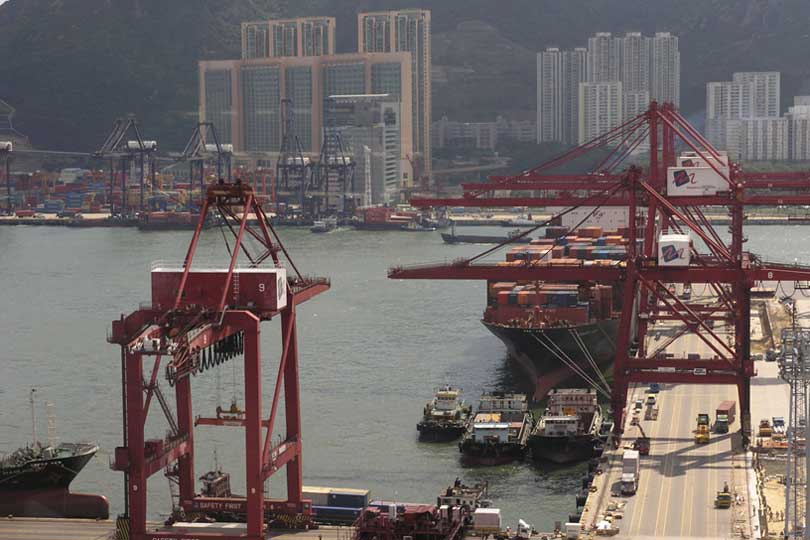By Jessica Domel
Multimedia Reporter
Tariffs on half-a-trillion dollars in goods hang in the balance as the world’s two largest economies engage in escalation of tariff increases.
At 11 p.m. Thursday (Central Time), the United States began implementing a 25 percent tariff on an estimated $34 billion in Chinese exports to the U.S.
Shortly after, Chinese officials retaliated with tariffs on $34 billion U.S. exports, including soybeans, sorghum, cotton, beef, poultry, pork and other agricultural commodities.
“It hits a wide swath of U.S. ag production,” Dave Salmonsen, senior director of Congressional Relations for the American Farm Bureau Federation, said in an interview with the Texas Farm Bureau (TFB) Radio Network. “These are going to be 25 percent tariffs. So if you’re in business of sending things to China consistently like meat people are, you’ll see tariffs go on and they’ll be there for a while.”
There is no end date for the applied tariffs.
“These tariffs, which the U.S. put on China and China retaliated, are really meant to get the two sides talking more about some of the U.S. complaints about Chinese business practices,” Salmonsen said. “So that could go on for a while.”
The tariffs could increase costs for the products with the tariffs.
“There could be short-term impacts of maybe not selling as much product into China because U.S. products will be more expensive with the tariff. For products in the U.S., it would have downward pressure on prices,” Salmonsen said. “If these go on for any length of time, Chinese buyers–they have to satisfy their customers–could be looking elsewhere.”
According to Bloomberg, items affected by U.S. tariffs include farm plows, semiconductors and airplane parts.
The Chinese Minister of Commerce said the United States has ignited the largest trade war in economic history, Xinhua News reported.
Salmonsen said he wouldn’t call it a trade war.
“The tariffs are meant for the purpose here of stimulating and getting the sides to talk, and that’s what we’re calling for,” Salmonsen said. “I think the use of that term implies this is an implacable or this is a never-ending situation, and this situation could quickly come to an end if the two sides got together and could come to an agreement.”
On Air Force One Thursday, Trump told reporters there will be tariffs on another $16 billion in Chinese goods in two weeks. He said there’s potential for tariffs on an additional $500 billion in Chinese goods.
“Hopefully we can contain this set and this will get resolved so it doesn’t go further and get escalated into ever-increasing tariffs,” Salmonsen said.
The U.S. is also considering tariffs on automobiles and parts imported into the United States, which could invite retaliatory tariffs from China and other countries.
“We import over $350 billion a year from a variety of countries of those things,” Salmonsen said.
Russia, the European Union, Canada and Mexico have all announced or started levying tariffs on U.S. exports as a result of a 25 percent tariff on steel and a 10 percent tariff on aluminum imported into the United States.
“The people who are really being hit a lot are pork producers,” Salmonsen said. “We sell over a billion dollars a year in pork to China. They were hit with a 25 percent tariff earlier in April as retaliation for the U.S. tariffs on imported Chinese steel and aluminum products. They’re also on this 25 percent list for this current set of tariffs.”
Pork producers are facing a 50 percent tariff when selling specific pork products into China.
“If you add that to the existing base tariff that’s there, trying to get pork into China these days is facing almost a 70 percent tariff. They’re concerned that they’re being priced out of that market,” Salmonsen said. “At the same time, (on July 5) Mexico put 20 percent tariffs on pork imports. That’s the largest pork export market the U.S. has at over $1.5 billion a year.”
U.S. exports are going to be higher priced in a variety of markets for a long variety of products, Salmonsen said.
“It’s hard and it is disruptive to try to find new markets and try to find a place for that. There are costs throughout the system whether it’s farmers, processors, transportation industry. There’s a saying that ‘goods will find a ho


This is going to be a hard pill to swallow, but as I was on vacation in Charleston SC this past week, I watched several container ships come and go into port. The one thing that stuck out to me was the fact that as the incoming ships arrived to be unloaded, they were riding deep in the water and the ones leaving were riding very high. This means they were returning to foreign ports with no American goods, this practice has to stop and become a more balanced trade between the US and other countries, trade wars must take place to open the lines of communication, as a farmer and rancher, it will be hard to get through this period, but hope it will be short-lived and become a more positive effect for agriculture of all aspects!!!